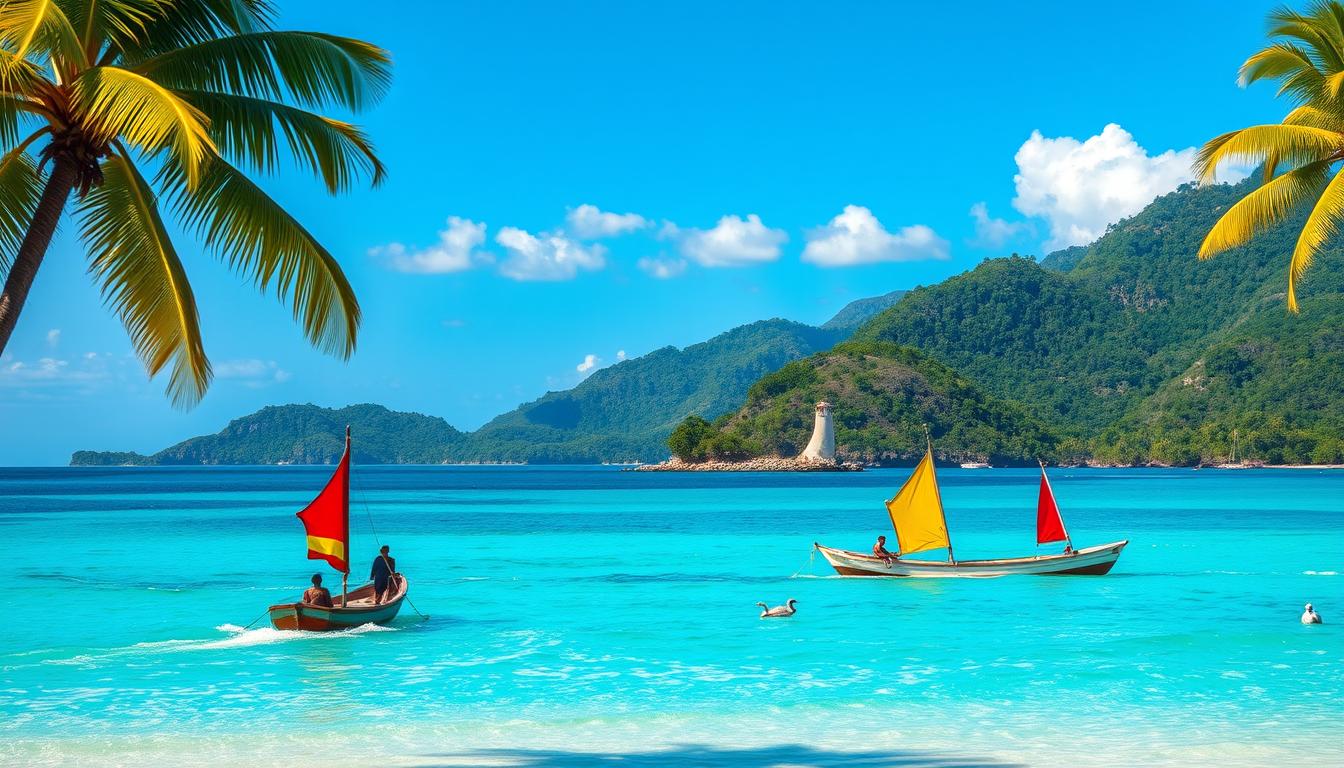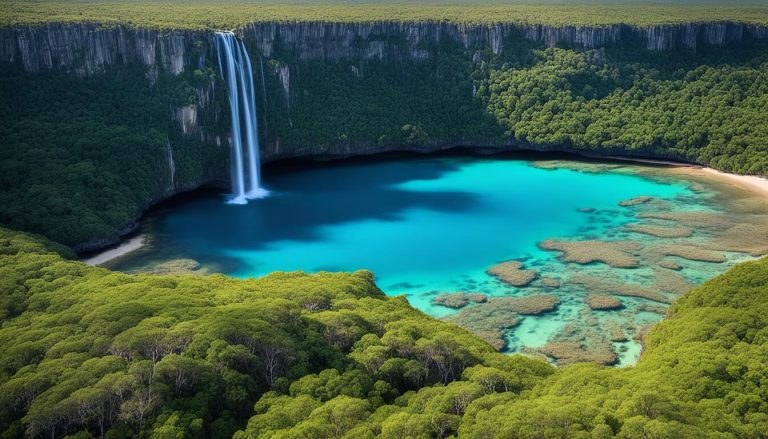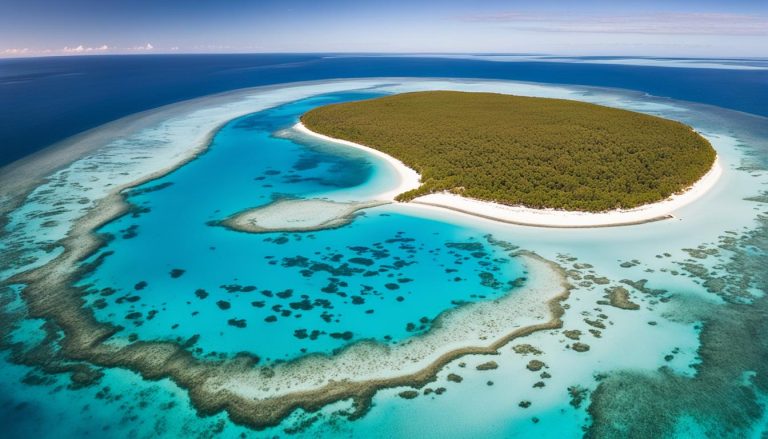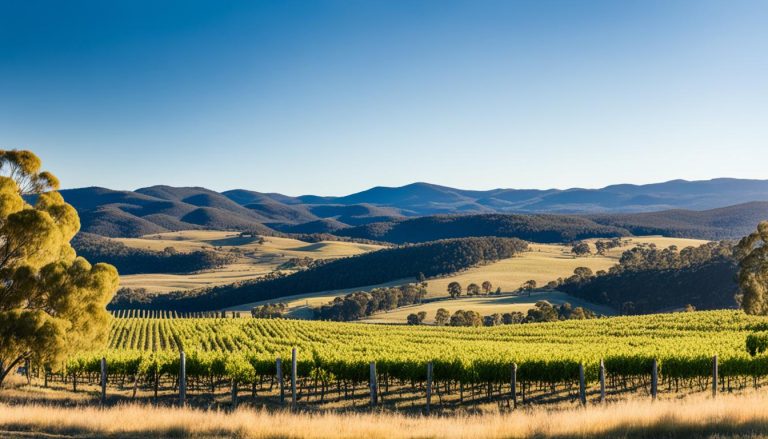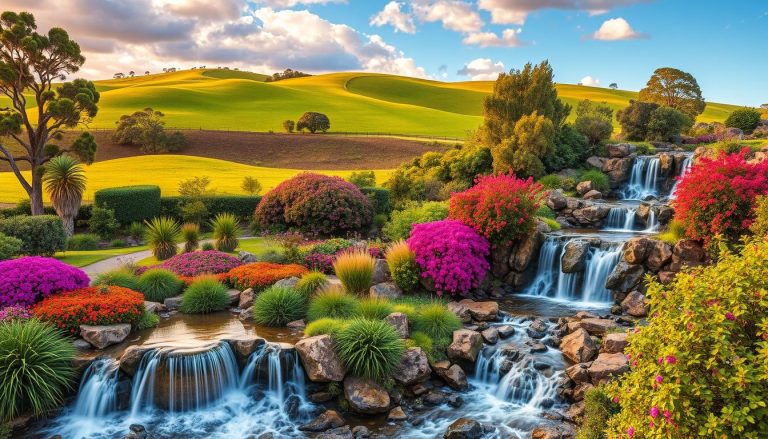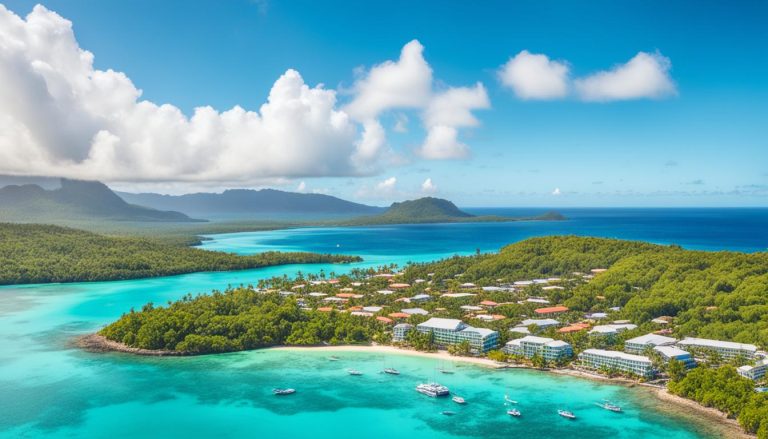Ever dreamed of visiting a tropical paradise where vibrant cultures meet stunning nature? Welcome to the Torres Strait Islands. They’re a hidden gem between Australia and Papua New Guinea. These islands may be small, but they’re packed with life, housing over 4,100 people, mostly Torres Strait Islanders.
Here, you’ll find a mix of Melanesian traditions, untouched landscapes, and many outdoor activities. It’s a place that will amaze you and make you want to learn more.
Key Takeaways
- The Torres Strait Islands offer a diverse range of activities, from exploring Indigenous cultures to snorkeling in pristine waters.
- The islands are home to a rich history dating back over 70,000 years, with a unique blend of Melanesian traditions and modern influences.
- Visitors can enjoy island hopping, beach relaxation, pearl farming, and opportunities to connect with the local Indigenous communities.
- The tropical climate and stunning natural landscapes make the Torres Strait Islands a haven for nature lovers, adventure seekers, and those seeking an authentic Australian experience.
- Getting to the islands can be a unique and memorable journey, with a range of transportation options available, including flights, ferries, and even cargo ship travel.
Exploring the Remote Beauty of the Torres Strait Islands
The Torres Strait Islands sit in the northeastern corner of Australia. They mix Melanesian culture with stunning natural beauty. This remote group of islands is between the Australian mainland and Papua New Guinea. It’s a place that shows a world unlike any other.
A Blend of Cultures and Natural Wonders
The Torres Strait Islands have a lively Melanesian culture. The local people keep their traditional life going for generations. Visitors can dive into the local customs, see vibrant dances, explore detailed artwork, and learn about pearl farming.
The islands are also known for their untouched beaches, clear waters, and diverse sea life. These offer many chances for adventure and chilling out.
Getting to the Torres Strait Islands
Getting to the Torres Strait Islands is a bit hard because they’re far from Australia. The main way in is through Cairns, which has flights to the islands. From Cairns, a short flight takes you to Horn Island, the biggest island with the main airport.
Other ways to get there include taking a ferry from the mainland, or even a private boat or helicopter tour. It’s important to plan your trip early because getting there can be tough and places to stay are few.
“The Torres Strait Islands are a hidden gem, where the Melanesian culture and natural beauty come together in a truly captivating way.”
Thursday Island: Administrative and Cultural Hub
Thursday Island is in the heart of the Torres Strait. It’s the main hub for administration and culture in this remote area. The island is bustling with life and offers many attractions that highlight its unique culture and stunning nature.
Top Attractions on Thursday Island
The Gab Titui Cultural Centre is a top spot to visit. It celebrates the Torres Strait’s history and modern Indigenous art. Here, you can dive into the culture through exhibits and performances by the Thursday Island Island Stars.
The Green Hill Fort and Museum is great for history buffs. It shows the military past of the area. You can see old tunnels and learn about World War II and the pearling industry at the museum.
The Japanese Pearling Memorial is another important site. It remembers those who worked in the pearling industry, which was big in the past.
| Attraction | Description |
|---|---|
| Gab Titui Cultural Centre | Showcases the rich history and contemporary Indigenous art of the Torres Strait |
| Green Hill Fort and Museum | Explores the region’s military history and involvement in World War II |
| Japanese Pearling Memorial | Pays tribute to the lives lost in the once-thriving pearling industry |
Thursday Island is a place where culture, history, and nature come together. It’s a key spot for anyone wanting to see the Torres Strait Islands.
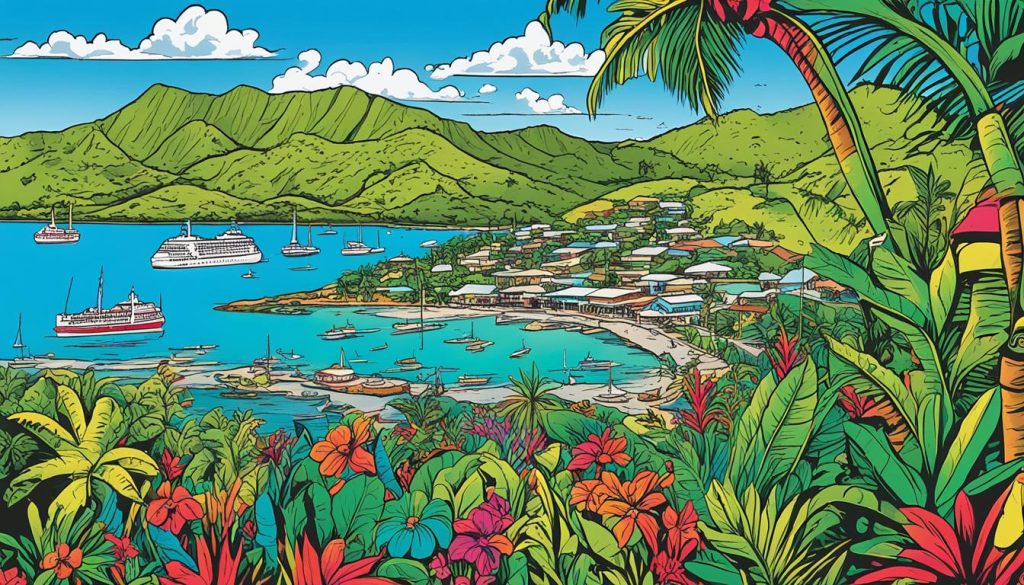
Masig (Yorke) Island: A Coral Cay Paradise
Masig, also known as Yorke Island, is a small coral cay in the Torres Strait. It’s a place where you can experience something truly special. The island is shaped like a teardrop and takes about 90 minutes to walk around. This lets you enjoy its peaceful and untouched beauty.
Visiting Masig Island means learning about coconut oil production, a key part of the local culture. You’ll also meet Uncle Ned Mosby, a priest and honorary police superintendent. He shares stories about the island’s traditions, giving you a deep look into their way of life.
This island is a hidden gem, with limited visitors and a small size. It’s perfect for those wanting to escape the crowds and enjoy nature. The Daintree Rainforest, over 135 million years old, and the island’s marine life are just the start of the wonders you’ll find here.
Getting to Masig Island is easy, with a two-hour drive to Horn Island and then a 45-minute flight. The only place to stay is Lowatta Lodge, where cabins cost A$280 (£144) per night. It’s a cozy spot to base yourself while you explore the island.
The island’s activities focus on traditional fishing by the Aboriginal Kaurareg and Torres Strait Islanders. Its history includes pearling and shell industries that ended in the 1960s. Now, they fish for mackerel, prawns, and crays. This blend of culture and nature makes Masig Island a memorable spot.
Badu Island: Largest Island in the Torres Strait
Badu Island is the largest in the Torres Strait Islands. It’s home to over 700 people. Here, nature and culture blend beautifully.
Nancy Nona's Paradise on Badu Island
Nancy Nona’s paradise, known as Alup, is a top spot on Badu Island. Nancy and her family made it in memory of her daughter, Savannah. It’s a special place for visitors to see the island’s beauty and learn about the culture.
Alup takes you to a world of peace and beauty. You’ll see lush greenery, clean beaches, and blue waters. It’s a place to connect with the island’s roots, through its paths and traditional crafts.
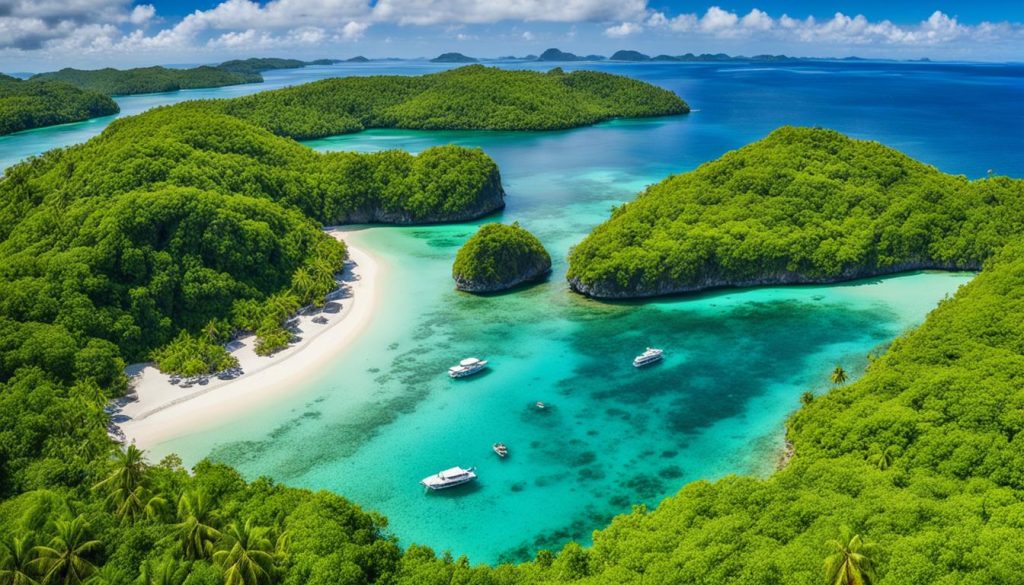
“Alup is a place of peace and reflection, where the island’s natural beauty and cultural essence come together in perfect harmony. It’s a true gem that every visitor to the Torres Strait should experience.”
If you want peace, nature, or to dive into the Torres Strait’s culture, visit Nancy Nona’s paradise. It’s a destination you can’t miss.
The Different Island Groups of the Torres Strait
The Torres Strait Islands are in northern Australia and split into five groups. Each group has its own culture and features. Visitors can dive into a rich experience by exploring these island clusters.
The Inner Group (Thursday Island Group)
The Inner Group, or Thursday Island Group, is the most visited part of the Torres Strait. It includes Thursday Island, the cultural and administrative center, and Horn Island with its museum and WWII sites.
The Near Western Group
The Near Western Group has islands like Badu, Mabuiag, Moa, and Naghir. They’re famous for their art and craft. These islands have a strong bond with their land and sea.
The Top Western Group
The Top Western Group includes Saibai, Dauan, and Boigu, Australia’s northernmost communities. They’re close to Papua New Guinea, blending cultures in a unique way.
The Central Group
The Central Group has Masig, Poruma, Warraber, and Iama, mostly coral cays. These islands are known for their beautiful beaches and clear waters. They offer a glimpse into traditional island life.
The Eastern Group
The Eastern Group has Darnley, the Murray Islands, and Stephen Island. It’s known for its volcanic landscapes and lush vegetation. These islands mix natural beauty with cultural heritage, tied to Indigenous communities.
Visiting the Torres Strait’s island groups lets you experience diverse cultures, natural beauty, and unique activities. This region of Australia is truly remarkable.
Torres Strait Islands, Queensland: Best Things to Do - Top Picks
The Torres Strait Islands sit off Queensland’s northern coast, offering many activities and experiences. You can relax on beautiful beaches, learn about the local culture, and see the marine life. This place is perfect for those who love adventure and peace.
Island Hopping and Beach Relaxation
Island hopping is a great way to see the Torres Strait Islands. You’ll find different landscapes and cultures on each island. Whether you want quiet or fun, there’s a spot for you.
Enjoy the sun, swim in clear waters, and live the island life. It’s a chance to relax and have fun.
Snorkeling and Diving in Pristine Waters
The islands are famous for their colorful reefs and sea life. They’re perfect for snorkeling and diving. Under the water, you’ll see tropical fish, sea turtles, and more.
The waters are clear and blue, making it a great place for all divers. It’s an experience you won’t forget.
Exploring Indigenous Culture and Pearl Farming
The Torres Strait Islands have a strong indigenous culture. You can learn about it by visiting art galleries, watching performances, and touring pearl farms. Pearl farming is a big part of the area’s history.
Looking for adventure, relaxation, or cultural insight? The Torres Strait Islands have it all. Go island hopping, dive in the clear waters, and find the beauty of this special place.
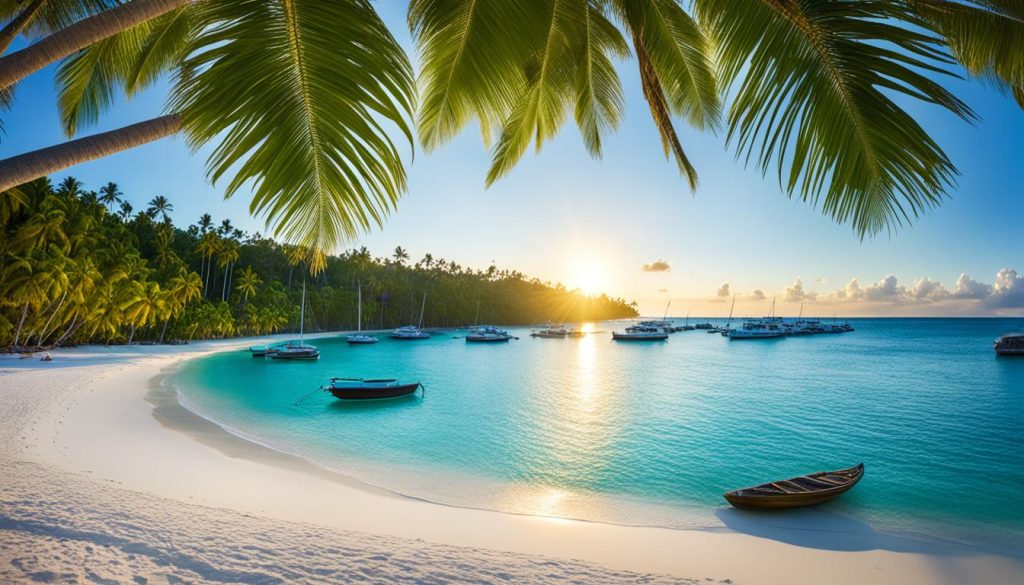
A Brief History of the Torres Strait Islands
The Torres Strait Islands have a long and rich history. They are located between Queensland’s northern tip and Papua New Guinea’s southern coast. This area has been shaped by many cultures and important events.
Indigenous Australians first settled the islands, coming from the Indonesian archipelago. The Spanish explorer Luis Vaez de Torres was the first European to see the islands in 1606. It wasn’t until the late 1800s that the British took control, appointing a police magistrate to govern the islands.
Throughout history, the Torres Strait Islands have been crucial for Australia’s military. Places like Horn Island were key during World War II. Now, the islands are a unique spot for visitors, offering a mix of Indigenous culture, natural beauty, and history.
“The Torres Strait Islands are a living testament to the resilience and adaptability of the region’s Indigenous people, who have called these islands home for millennia.”
Sustainable Tourism on the Torres Strait Islands
The Torres Strait Islands focus on sustainable tourism. They aim to respect the environment and local culture. Many places to stay and activities are eco-friendly. This shows their commitment to keeping the area’s unique heritage and delicate ecosystems safe.
Eco-Friendly Accommodations and Activities
Guests can stay in eco-lodges that use green energy and traditional building methods. These places lessen their environmental impact and offer a deep cultural experience.
There are also low-impact activities that teach visitors about the area’s marine ecosystems. For example, guided reef walks let you see the coral reefs. You’ll learn why conservation is key.
- Eco-lodges that use renewable energy and traditional materials
- Guided reef walks that promote environmental awareness
- Initiatives to support sustainable fishing practices
- Collaboration between tourism and science for a more sustainable future
The Torres Strait Islands aim for a balance between growth and protecting the environment. They want to keep their natural beauty and culture safe for the future.
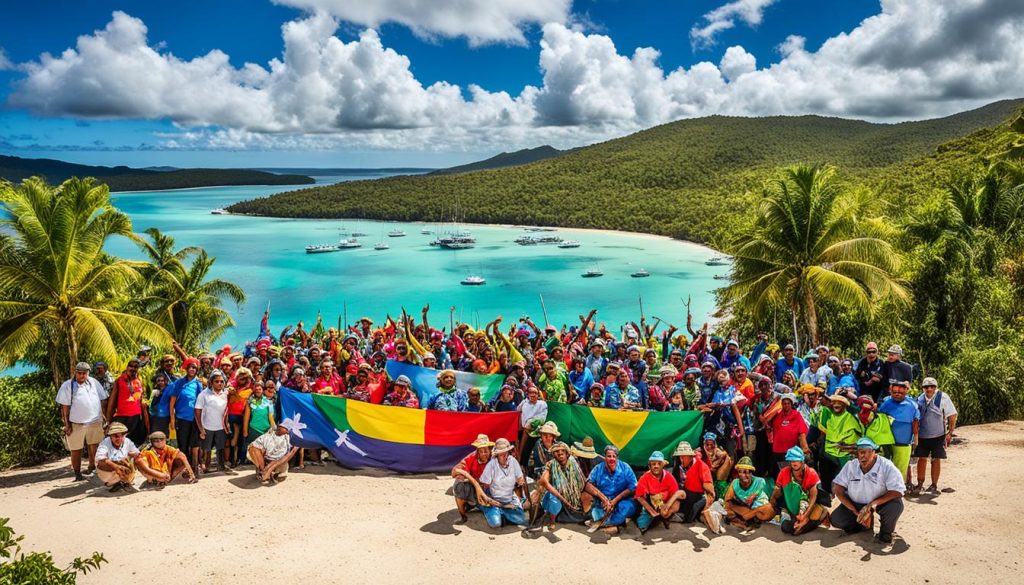
“Torres Strait Island Traditional Owners have acted as custodians to the natural landscapes of Tropical North Queensland for thousands of years.”
| Sustainable Tourism Initiatives | Key Statistics |
|---|---|
| Ecotourism Australia certified experiences | Tropical North Queensland has the highest concentration in Australia |
| Visiting the Great Barrier Reef | Helps fund management and research for the reef’s long-term resilience |
| Tree planting for every passenger | Offered by eco-leaders like Passions of Paradise and Sailaway |
| Coral Nurture Program | Collaboration between tourism and science for a more sustainable future |
Planning Your Visit to the Torres Strait Islands
Planning a trip to the Torres Strait Islands is important because they are far away and have limited ways to get there. You might want to see the rich indigenous culture, enjoy the beautiful beaches, or explore the natural beauty. Knowing the best time to go and how to move around is key for a great trip.
Best Time to Visit
The dry season, from May to October, is the best time to visit the Torres Strait Islands. The weather is warm and dry, perfect for snorkeling, diving, and relaxing on the beach. You’ll also see cultural festivals and events, letting you experience the local traditions.
Getting Around the Islands
Getting around the Torres Strait Islands can be tough because there are few public transport options. Thursday Island is the main hub, where you can find administrative and cultural activities. Renting a golf buggy is a good way to see the island. For moving between islands, you can use private boats or chartered flights. Remember, you might need to book ahead and get permission to visit some islands.
| Island | Transportation Options |
|---|---|
| Thursday Island | Golf buggy rental |
| Outer Islands | Private boat transfers, chartered flights |
Plan your visit well and know your transport options to fully enjoy the Torres Strait Islands. You’ll get to experience the unique culture and stunning nature of this Australian region.
Conclusion
The Torres Strait Islands in Queensland are a special place. They mix Melanesian culture with stunning nature and lots of outdoor fun. From Thursday Island to the hidden coral cays, each island has its own charm.
These islands offer a real Australian experience, away from the crowds. They focus on sustainable tourism and keep their rich heritage alive. You can enjoy island hopping, beach time, snorkeling, diving, or learn about the local culture and pearl farming.
When planning your trip, dive into the local life. Choose eco-friendly places to stay and activities. This way, you’ll make a positive mark on the region. The Torres Strait Islands are a hidden treasure, and we hope your visit will be memorable and enlightening.
